Categories
Recent Posts
Tags cloud
Archives
- November 2020
- October 2020
- September 2020
- February 2019
- January 2019
- October 2018
- May 2018
- April 2018
- February 2018
- December 2017
- October 2017
- July 2017
- May 2017
- April 2017
- January 2017
- September 2016
- June 2016
- May 2016
- April 2016
- March 2016
- January 2016
- November 2015
- October 2015
- August 2015
- June 2015
- May 2015
- April 2015
- February 2015
- January 2015
- TU Delft>
- TU Weblog>
- Delft Microbiology>
- 2015>
- April
Posted in April 2015
Here there be surprises!
Thanks to the hard work of volunteers over the last couple of decades, the catalogues for the various collections in the Archive are gradually becoming more detailed, and this continues, in combination with document scanning. Also, now that we’re going to be moving to another building at the end of the year, the current team has been investigating cupboards and boxes that were fairly low down the priority list. We’re often surprised by what we find. Many things shed light on how things were done in the late 19th and early 20th centuries, others are simply curiosities which may add to our questions even as they answer others. For example, letters by van Iterson to an instrument maker explained the envelope full of paper discs labelled “anorthoscope” and we then discovered in the Instrument Catalogue that we still have one! Anorthoscopes might be considered to be a forerunner of movies where the user turned a handle and figures on paper discs seemed to walk or run. Judging by the results of internet searches, they’re largely considered to be toys, but van Iterson was obviously using them for some sort of research, although we still aren’t sure what! The images with this post show examples of other finds.
In roughly chronological order:
Beijerinck started as a botanist (the discipline of microbiology hadn’t really been invented then) and wrote his PhD thesis on plant galls. It was obviously a subject close to his heart since he kept his samples, including a couple of boxes containing 19th century pillboxes full of different sorts of gall.
Beijerinck’s work on TMV is credited as being the first to establish that the causative effect of Tobacco Mosaic Disease was self-replicating and thus not a chemical. That we have his lab journals is well-known, but we also have the plates used to illustrate that first paper (and many others). There’s actually 5 plates in this set, each slightly different so that the published image was correctly coloured.
A fairly recent gift to the collection was a set of brown notebooks that were found after the death of the donor’s relative. These proved to be a full set of lecture notes made by a student during Beijerinck’s microbiology lecture series. We’ve also been given the set of notes that Kluyver made for his speeches when his PhD students were awarded their Doctorates, among other things. I love the moment when someone comes through the door and says “someone I know is clearing a house and wants to know whether the museum wants this”…
Harry Barker spent a year with Kluyver in the 1930s, doing some of his early work on methane-producing bacteria, and his slides are among a pile of microscope preparations from that period that turned up in a cupboard. As well as the slides, we have glass bottles containing chemicals, preparations and samples, including a very early enzyme extract labelled “lactase”. There was still measurable activity in the sample when it was tested in 1989 despite the fact that storage conditions have been less than optimal over the century since it was made.
During WW2, Kluyver was Chairman of a committee that tried to maintain contact with the students who’d been taken as forced labour to work in Germany. We still have many of the papers relating to that time, including the card indexes showing where the students were, and where they were working, as well as correspondence from students and the authorities. (Ignore the key, it’s just there to hold the papers flat.)
When Mrs van Iterson visited the laboratory (quite a long time ago), she commented (more than once) that she wished that her husband had had a computer. When one looks at the drawings and calculations (made with nothing more than graph paper, log tables and a slide rule) it’s easy to see why. His work on phyllotaxis is still regarded as relevant today, and is a tribute to the days and days of patient calculation and drawing that formed the foundations of modern mathematical modelling.

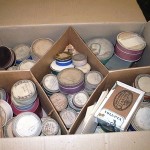

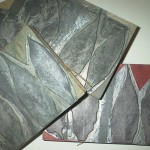
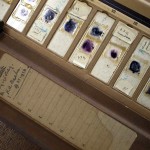
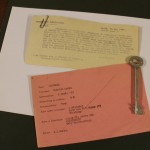
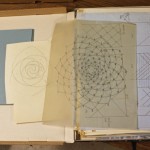
Recent Comments